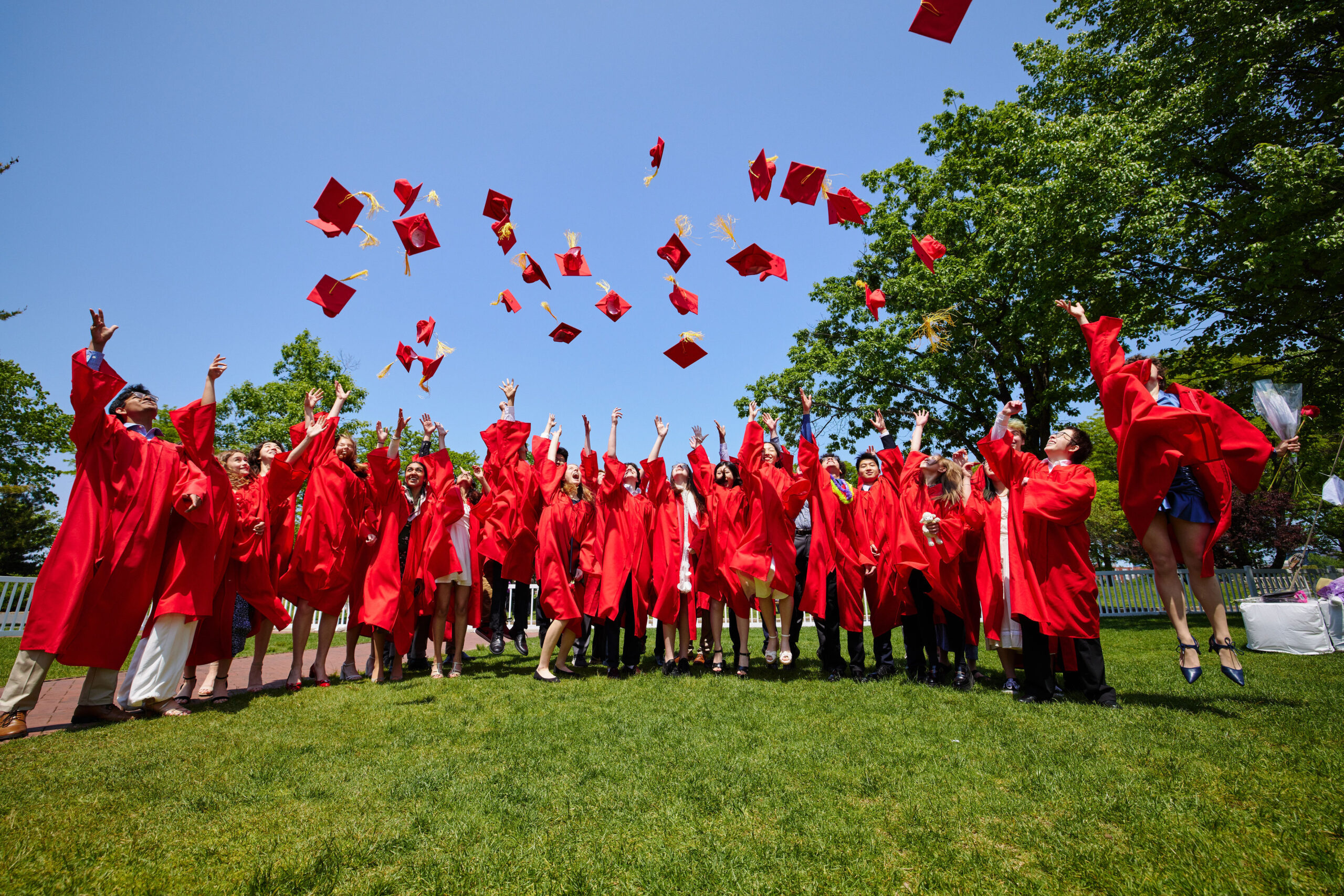News
Congrats and Good Luck, Class of 2023!
As summer wanes and back-to-school energy fills the air, we are wishing our most recent graduates the very best of luck as they embark on the next step of their journeys at college and beyond.
As you can see from the impressive matriculation list below, the members of the BUA Class of 2023 have exciting paths ahead of them. Watch out, world -- these talented, passionate, determined young people are ready to make their mark. To our newest alums: we couldn’t be prouder of you. Stay in touch, drop us a postcard from your adventures, and don’t forgot to stop by for a visit when you’re in town — you’ll always have a home at BUA.
Members of the BUA Class of 2023 will attend the following institutions this fall:
Barnard College
Bentley University
Boston College
Boston University (11)
Brown University
Bryn Mawr College
University of California – Berkeley
University of California – San Diego
Carnegie Mellon University (2)
University of Chicago
Cornell University (2)
Dartmouth College
Harvard University (2)
Haverford College
University of Maryland – College Park
University of Massachusetts – Amherst
Massachusetts Institute of Technology (2)
McGill University
New York University (2)
Northeastern University (4)
Northwestern University
Oberlin College
Oregon State University
University of Pennsylvania
Smith College
The George Washington University
Tufts University (2)
Williams College
Yale University (3)
The Many Side Projects of Dr. Brett Abigaña
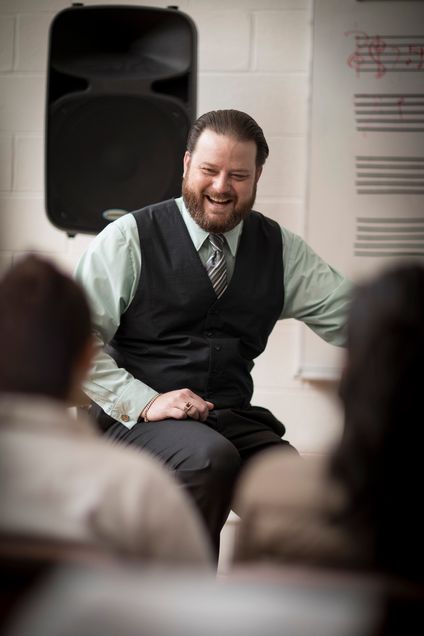
In addition to being BUA's longtime and beloved music teacher, Dr. Brett Abigaña is a nationally-known, highly in-demand composer and conductor who crisscrosses the country (and beyond!) showcasing his talents. In the past year alone, hiss work has taken him from Hawai’i to Mystic, CT, from the hallowed chambers of Carnegie Hall to the toes-in-the-sand amphitheater on Cape Cod’s National Seashore.
In December of 2022, Dr. Abigaña traveled to Chicago to present his music at the Midwest Band and Orchestra Clinic, and in February did the same at the California State Music Educators Conference, where he met conductors and educators from all over the west coast, had performances of his music, and discussed new projects.
A new music podcast, “Off the Shelf,” was born from one of these conversations. The first episode has been recorded and will be launched in the coming months (stay tuned!). This summer, he was a guest on fellow composer Sergio Barer’s podcast “Let’s Talk About Music.”
In March of 2023, Dr. Abigaña traveled to Honolulu, Hawai’i as the Composer-In-Residence for the Pacific Basin Music Festival, a position he’s held for the past five years. The following month, he made a quick day trip to New York City to host the New York International Music Festival Concert at Carnegie Hall. He returned to Carnegie Hall this past June as Composer-In-Residence for the New York Sounds of Summer Music Festival, where his piece “At First Sight” had its world premiere.
In May, Dr. Abigaña received a commission from the US Naval Academy to write a piece commemorating the appointment of the female Superintendent of the USNA. The piece, a new oratorio tentatively titled “Athena’s Ascent,” honors women in leadership generally and in Naval leadership specifically, and will be performed in January of 2024 by the USNA Band and USNA Women’s chorus, along with a soprano soloist and the USNA Chapel Organ, the largest drawbar organ in the world. In preparation for this premiere, the USNA Admiral has ordered a complete inspection of the structural integrity of the USNA Chapel, a piece of which was broken off as a result of the sympathetic vibrations of the organ music Dr. Abigaña wrote for his last USNA commission. Dr. A. shares that “I’ve secretly been in touch with the organist, and he’s up for the challenge of breaking the chapel just a little bit more with some very loud organ music.”
Many teachers use summer months as a chance to rest and recharge. Not Dr. A. This year, the Cape Cod Symphony Orchestra commissioned him for a new piece to be premiered at their July 4th concert. Unfortunately, the concert was canceled due to rain; fortunately, it was rescheduled to later in the summer, which means you haven’t missed it! The piece is called The Lamp Beside the Golden Door, and will accompany a reading of “The New Colossus,” Emma Lazarus’s famous poem about the Statue of Liberty. You can catch this free concert on Thursday, August 24 at 7:00 p.m. at the National Seashore Amphitheatre in Eastham, MA; lawn chairs and picnics encouraged!
Kelsey Liu ’26 Earns Spot at US National Chess Championships
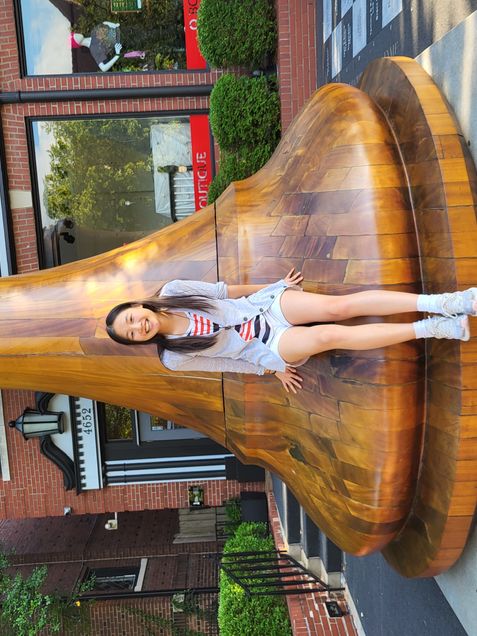 This summer, Kelsey Liu ‘26 defended her title as the girls state champion in chess, winning the Massachusetts Girls Championship with a perfect 5- score at the June competition in Boston. Her performance earned her a qualifying spot at the US Junior Championship hosted this month by the St. Louis Chess Club in St. Louis, MO. This invitational tournament features the top chess players in America under the age of 20, and Kelsey says she feels “Incredibly humbled and honored to be a part of this prestigious event.”
This summer, Kelsey Liu ‘26 defended her title as the girls state champion in chess, winning the Massachusetts Girls Championship with a perfect 5- score at the June competition in Boston. Her performance earned her a qualifying spot at the US Junior Championship hosted this month by the St. Louis Chess Club in St. Louis, MO. This invitational tournament features the top chess players in America under the age of 20, and Kelsey says she feels “Incredibly humbled and honored to be a part of this prestigious event.”
Kelsey placed 8th overall in the final standings, earning her $700 in prize money. She shared that "the tournament was really fun and I made some new friends there too. Although I didn’t do as well as I would have liked...I gained a great deal of experience and am determined to keep improving!"
Kelsey is currently ranked the #13 chess player among US girls under 21 and #16 for age 14 overall. She is pictured here with the world's largest chess piece in front of the World Chess Hall of Fame!
Jon Freeman ’04 Receives BUA Distinguished Alumni Award
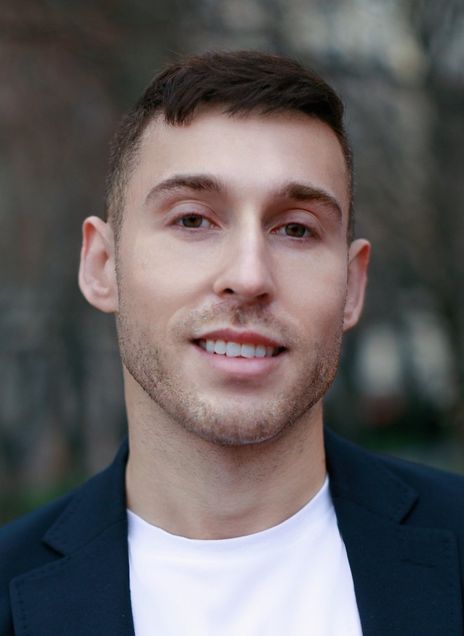 BUA is delighted to present the 2023-2024 Distinguished Alumni Award to Jon Freeman '04 for his groundbreaking work in social neuroscience and for his national advocacy for LGBTQ+ visibility and representation in STEM. This annual award, launched in 2022, goes to an alumnus/a who best exemplifies the values of BUA and has used those qualities to make an impact on the community and world around them. The inaugural recipient of the Distinguished Alumni Award was Magdalena Slosar-Cheah '99 for her work in the field of infectious disease.
BUA is delighted to present the 2023-2024 Distinguished Alumni Award to Jon Freeman '04 for his groundbreaking work in social neuroscience and for his national advocacy for LGBTQ+ visibility and representation in STEM. This annual award, launched in 2022, goes to an alumnus/a who best exemplifies the values of BUA and has used those qualities to make an impact on the community and world around them. The inaugural recipient of the Distinguished Alumni Award was Magdalena Slosar-Cheah '99 for her work in the field of infectious disease.
Jon Freeman is a social neuroscientist and associate professor of psychology at Columbia University, where he directs the Social Cognitive & Neural Sciences Lab. He received his BA from New York University in 2007 and his PhD from Tufts University in 2012. His research examines the human brain mechanisms underlying snap judgments, first impressions, and unconscious bias using neuroimaging, computational modeling, and behavioral paradigms. His work has made several discoveries, such as how the brain processes a person’s trustworthiness outside conscious awareness, or how stereotypes and prior social experiences can create distortions in the brain’s visual system. He also developed a novel technique that uses hand movements to uncover how split-second decisions unfold over fractions of a second in the brain, which is now widely used by the scientific community.
Jon is the author of nearly 100 peer-reviewed publications and the recipient of a number of awards, including the National Science Foundation CAREER Award, the Association for Psychological Science’s Janet T. Spence Award for Transformative Early Career Contributions, the Federation of Associations in Behavioral & Brain Sciences’ Early Career Impact Award, and other distinguished awards from the Social & Affective Neuroscience Society, the Society for Personality & Social Psychology, the International Social Cognition Network, and the Society for Social Neuroscience. His research is frequently funded by the National Institutes of Health and National Science Foundation and has appeared in media outlets such as the New York Times, Washington Post, Wall Street Journal, and TIME Magazine.
Jon is also leading national advocacy on the challenges that LGBTQ+ people face in the STEM workforce and on policymakers’ blind spots in resolving these disparities. Since 2018, he has been working to have sexual orientation and gender identity demographics incorporated into official data collection and reporting systems of the U.S. government and higher education that are used to ensure the equity and inclusion of underrepresented groups in STEM. He has raised public attention on these issues with op-eds in Science, Nature, and Scientific American, authored extensive formal requests to the government, facilitated the House of Representatives’ passing of the LGBTQ+ Data Inclusion Act on behalf of 90 scientific organizations, and regularly works with federal agencies and the White House on STEM diversity issues. Due to Jon’s efforts, for the first time since 1957 every graduating PhD student at every US university will soon voluntarily be asked their sexual orientation and gender identity on the government survey required to graduate. Such data will have the power to create transformative change in the equity of LGBTQ+ people in STEM and higher education. For this work, Jon was recognized as the 2019 LGBTQ+ Scientist of the Year by Out to Innovate for his “exemplary, cross-disciplinary scientific contributions and his public advocacy on behalf of LGBTQ+ people in STEM.”
We look forward to welcoming Jon back to campus this year to celebrate his many accomplishments.
Chief of Staff to Boston Mayor Michelle Wu Delivers Commencement Keynote Address
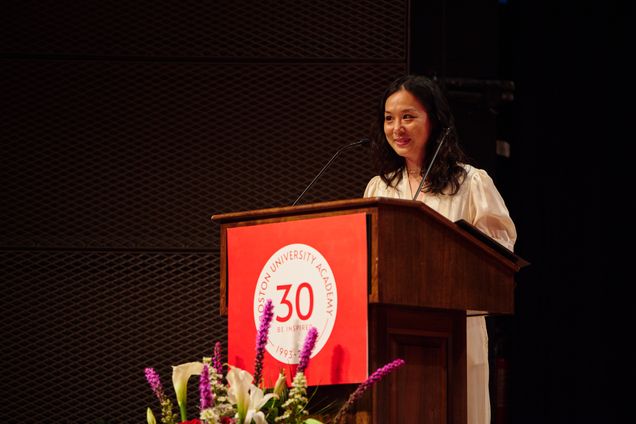 On Monday, May 22, Boston University Academy hosted its 29th commencement exercise at BU's Tsai Performance Center. The BUA Class of 2023 crossed the stage to receive their diplomas from Head of School Chris Kolovos and Associate Head of School Rosemary White. Giselle Wu '23 and Margaret Chu '23 recited the Classics orations in Latin and Greek, respectively. Sally Jamrog '23 and Condredge Currie '23 delivered the student addresses. Following the ceremony, graduates and their families celebrated with a reception under the tent on BU Beach.
On Monday, May 22, Boston University Academy hosted its 29th commencement exercise at BU's Tsai Performance Center. The BUA Class of 2023 crossed the stage to receive their diplomas from Head of School Chris Kolovos and Associate Head of School Rosemary White. Giselle Wu '23 and Margaret Chu '23 recited the Classics orations in Latin and Greek, respectively. Sally Jamrog '23 and Condredge Currie '23 delivered the student addresses. Following the ceremony, graduates and their families celebrated with a reception under the tent on BU Beach.
Tiffany Chu, Chief of Staff to Boston Mayor Michelle Wu, delivered this year's Commencement keynote address. Ms. Chu, a first generation Taiwanese American, comes from a background in design, urban planning, and entrepreneurship. Prior to joining the Mayor’s office, she was the CEO & Co-founder of Remix, a collaborative software platform for transportation planning used by 500+ cities around the world. Remix was named a Tech Pioneer by the World Economic Forum and Bloomberg for furthering sustainability and equity in the field, and was acquired by Via in one of the largest software acquisitions of 2021.
Ms. Chu was appointed as a Commissioner of the San Francisco Department of the Environment and served on San Francisco’s Congestion Pricing Policy Advisory Committee. Previously, Ms. Chu served at Code for America, Y Combinator, Zipcar, and Continuum. She's been named in Forbes' 30 Under 30, LinkedIn's Next Wave of Leaders Under 35, and featured at SXSW, Helsinki Design Week, the New York Times Cities for Tomorrow Conference, and more. She holds a degree from the Massachusetts Institute of Technology’s (MIT) School of Architecture and Planning.
In her remarks, Ms. Chu described her non-linear education and career path as a series of "lily pads floating on the surface of a pond," her journey from lily pad to lily pad propelled by her love of cities, her inherent curiosity, and a keen desire to explore:
"Looking back, I could easily spin it all to sound like I showed up to my high school graduation with a 5-, 10-, even 15-year plan in hand. Like: 'In five years I'll graduate from college and launch a career. In ten years, I'll start a company. In 15 years, I'll work for a Mayor.' And on and on. But honestly, thatʼs not how it worked for me... And, a little secret? Thatʼs not how it works for most of us.
Over the past 17 years: I changed careers about four times; I selected classes solely based on which ones included fun-sounding field trips; and, at college graduation, when all of my friends had full-time jobs lined up, I didn't have one. And I didn't really know what I was going to do."
After college, Ms. Chu embarked on a decade of exploration spanning several continents and jobs on both coasts before landing back in Boston in her current role as Chief of Staff to Michelle Wu, the first-ever woman and person of color to be elected Mayor of the City of Boston. In her remarks, Ms. Chu encouraged the members of the BUA Class of 2023 to similarly "tear down the walls and make the entire city your classroom":
"I mentioned earlier that itʼs important to spend time outside the classroom, especially when you have an environment as rich as Boston to draw from. In my current role, Iʼm learning so much about how a city works: how a conversation or decision translates to the real world; whether that's youth engagement or housing affordability, constituent services or police reform. Seeing it happen, the operations staff, the public servants working to bring us closer—step by step—to a world thatʼs a little bit better than it was yesterday. The City is home to all of it.
And Iʼm sure you've noticed that we could always—always!—be doing more. We could be planting more trees, supporting more art, creating more opportunities for communities to come together—itʼs why Iʼm so excited about BUAʼs place-based approach to our city.
Having a 'curriculum without walls,' whether that's through mentoring middle school students in innovation, self-reflective ways; or through your senior thesis projects, tracking the correlation between race, wealth, and green space, or exploring how art is critical to fighting climate change. Or through your community service work, helping to connect lifelong Bostonians to the magic of food, play, or conserving our green spaces. You've already scoped out so much of whatʼs around you. So wherever you go from here, donʼt put so much pressure on yourselves!"
Ms. Chu closed her remarks by offering the graduates a few pieces of advice:
"Eat breakfast (you will be happier). Wear sunscreen. Take weird classes! Even if youʼre pre-med or pre-law or pre-professional...take weird classes especially if you are those things. Develop hobbies. Learn a new language. Take Spanish! (I wish I had.) Do pottery! Go ice fishing! Salsa dance! You donʼt need to do what everyone else is doing. Social convention doesn't bind you. Just because you think everyone is taking a certain class, or getting some specific internship, or wanting to go into management consulting—forge your own path. Youʼll be more interesting that way. Engage with people you would never meet otherwise. Some of the people sitting around you—yes, youʼll be friends forever!—But also make new friends. Proactively reach out to people who are different from you. Lastly—be curious, but not necessarily in a directed way. Go down rabbit holes. Take detours! Find your next unexpected lily pad.
Because, I promise you, this is just the beginning."
It was our privilege and honor to host Tiffany Chu as this year's Commencement keynote speakers, and we are grateful for the warmth, candor, and wisdom she shared with our graduates and assembled guests. The full video of BUA's 29th Commencement ceremony, including Ms. Chu's remarks, is available here. The complete photo gallery from Commencement 2023 is available here.
The members of the BUA Class of 2023 will attend the following institutions next fall:
Barnard College
Bentley University
Boston College
Boston University (11)
Brown University
Bryn Mawr College
University of California - Berkeley
University of California - San Diego
Carnegie Mellon University (2)
University of Chicago
Cornell University (2)
Dartmouth College
Harvard University (2)
Haverford College
University of Maryland - College Park
University of Massachusetts - Amherst
Massachusetts Institute of Technology (2)
McGill University
New York University (2)
Northeastern University (4)
Northwestern University
Oberlin College
Oregon State University
University of Pennsylvania
Smith College
The George Washington University
Tufts University (2)
Williams College
Yale University (3)
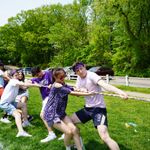
One Trusted Adult
I recently read Brooklyn Raney’s One Trusted Adult. A longtime independent school teacher, coach, and administrator, Raney surveys the research – and provides page after page of colorful anecdotes drawn from her experience in schools – about how critical it is that an adolescent feels a connection to at least one trusted adult mentor outside the home. The research tells us that that kind of relationship is a protective factor against a range of behavioral and mental health issues. It also opens the door to student learning, productivity, curiosity, and engagement in school and beyond; kids learn when they feel safe and seen. These insights are why we commit so deeply to our advising system, insist on small classes, encourage one-on-one extra help with teachers, and aspire that every one of our students will be known and loved by the adults in this community.
Raney also discusses the seemingly contradictory – but deeply important – insight that adult-student boundaries are a key ingredient in creating that close connection. Every year during our faculty-staff in-service retreat, we engage in training with outside counsel on boundaries; we review policies and discuss a series of case studies to explore what is appropriate mentorship and what crosses the line. Student safety concerns are paramount. But we also dig into this work to reinforce what the research tells us: kids may say they want their teachers to be their friends, but what they really need are mentors – adults who care for them enough to create appropriate distance and guardrails in order to give students the space they need to get their needs met.
While the book is written for educators, it may be interesting for parents as well and is a quick, entertaining read.
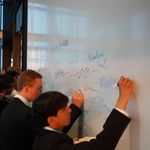
Our Seniors
Last night, the faculty and staff gathered with our seniors and their families to celebrate the Class of 2023. It was an intimate moment before Monday’s public commencement ceremony. We heard an emotionally powerful reflection by senior Lizzie Seward, laughed along with a funny address by alumni relations director and fan favorite Mr. Stone, and marveled at an amazing video filmed and produced by senior Rohan Biju consisting of interviews of all of his classmates (I’m told there is a much longer version for seniors’ eyes only – hmm). Mostly, it gave us a chance to be together and enjoy one another’s company.
That, to me, is a defining characteristic of the Class of 2023: strong, tight, loyal bonds. This group has come through the storm. As ninth graders, they went home in March 2020 to end the year remotely. They came back as sophomores to a school that offered in-person learning but where many of our traditions, social occasions, arts experiences, and athletic offerings were curtailed in light of the ongoing pandemic. Their junior year was marked by the tragic loss of one of their beloved teachers. During and likely because of these challenges, these young people formed remarkably close friendships. I saw those tight-knit circles of friendship in the room last night. I saw them in Rohan’s video. I have seen them every day in these hallways, on the fields, and in the junior-senior room. These are the friends who will offer advice and support through college and early careers, celebrate their weddings and the births of their children, and stay with them. Through a particularly challenging four years, this group has given itself a gift: lifelong friendship.
The Class of 2023 – talented, hard-working, competitive, curious, diverse – will leave this school in a few days better than they found it and will leave us all with a lesson in what matters most: relationships.
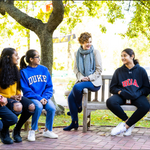
Teaching is about Relationships
Last Saturday, we celebrated this school’s 30th year with a wonderful celebration at the Museum of Fine Arts. Early in the program, we all watched a video featuring teachers past and present, parents, alumni, and others talking about their BUA journeys. Every time a teacher appeared on the screen, the audience spontaneously erupted in applause and cheers. While those of us who planned the event did not anticipate that response, we were not surprised either.
Teaching is about relationships. Over the past few weeks, I’ve visited about a dozen classes. Styles and content varied. But what was consistent was a deep, palpable trust between teachers and students. Teachers joked, praised, challenged, and cajoled – all with the clear subtext that they loved these young people. Students, feeling secure in that love, spoke up, tried new approaches, took risks, laughed, struggled, and demonstrated the vulnerability it takes to learn and grow.
We know that kids learn from people they trust – that emotional safety and connection open the door to learning. Michael Reichert and Joseph Nelson, whom I had the pleasure of collaborating with on several projects years ago, offered an evidence-backed overview of this idea in the context of boys’ education. David Brooks wrote a powerful, personal version of this story in an opinion piece. And, for anybody looking for a pick me up, I suggest this TED talk by Rita Pierson. In the end, though, all we need is to think about our own experiences – about a teacher who took the time to get to know us and saw something in us that perhaps we didn’t even see in ourselves. Those people changed our lives. And we are blessed to have a school full of them here at BUA.
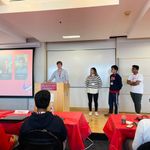
“Look What I Started!”
I recently attended BUA’s first-ever Shark Tank-style business plan competition. Our students pitched their entrepreneurial ideas to a panel of judges – everything from sustainably sourced protein powders to an organizational app for students to keep track of homework and other assignments. There were quite a few pitches, and the room was filled with student spectators cheering them on. A few weeks earlier, I attended BUA’s first-ever hackathon: Hack@BUA. BUA students organized and ran a competition for dozens of middle and high school students across the Boston area challenging them to come up with a technological solution to a pressing societal challenge.
BUA students dreamed up these events. With the support of the adults in the community, the students planned and executed them. And, in both cases, they are already thinking about what these events will look like next year. They will be part of these students’ legacies hopefully long after they graduate.
We know that having a sense of purpose plays a central role in happiness and fulfillment, and that purpose comes from engaging in something that is both personally meaningful and meaningful to others. Through these types of experiences, these students got a taste of just that. If that taste turns into a lifelong habit, that will be a boon not just to these students, but to all of us.

Listening to Students
I just finished up lunch with a 9/10th-grade advisory group. Over pizza, the nine students told me about what their day-to-day is like; what they love about BUA; what’s hard; and what they wish was different. A few pieces were news to me. Most were things I had heard about before, and the conversation gave me a chance to tell them about exciting new things that are already in the works and for us to brainstorm about how, working together, we can make BUA better. I’ll meet with all 9/10 advisories this spring and will set up open sessions for juniors and seniors as well – like I do every year.
We are a better school for giving students a chance to tell us about their lived experiences; they are, after all, the experts! And we are better when we give them agency – the permission and power to make change by working in partnership with the adults in the community. This year, one of our seniors led a senior-experience working group made up of students, faculty, and staff; the group was charged with suggesting ways to enhance the 12th-grade year. Our standing DEIB committee is a collaboration between BUA adults and students; the topic at yesterday’s DEIB meeting was how we recognize, commemorate, and celebrate different traditions and cultural heritages at BUA throughout the year and what specific initiatives we can put in place for next year. Our Student Council is perhaps the most important and visible force for student-led change at BUA – sponsoring events, recommending policy changes, and generally advocating ways to improve this school they love so much. And the list goes on. We talk a great deal about how capable, passionate, and thoughtful our students are. What a shame it would be if we did not hear what’s on their minds and work alongside them to make BUA better.
